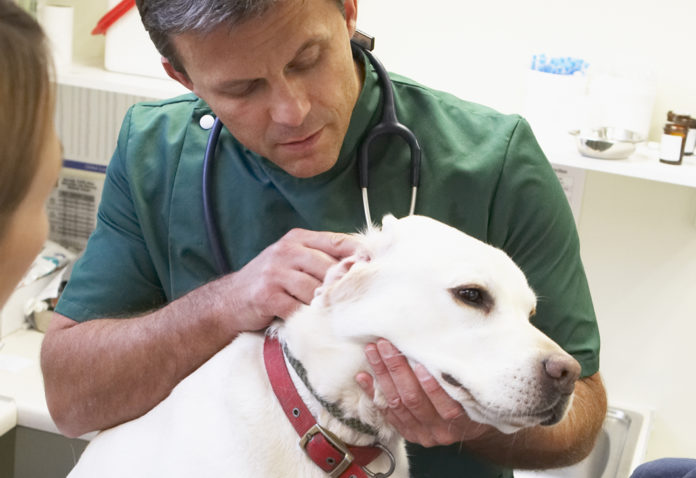Many people find a lump on their dog or cat and immediately fear the worst. Finding a lump on your pet is many steps away from a terrible diagnosis. First you need to schedule a veterinary appointment.
When a pet comes to me with a mass or lump, I start gathering a history before the physical examination. When did you first notice the growth and has in doubled or tripled in size over how long? Is it itchy, painful or hot? Is there any local trauma? Masses may be anything including: bruises under the fur, ingrown hairs, inflammation, or an abscess. Enlarged lymph nodes felt near the mass may be important. Treatment options may include surgery, so we need to assess the whole patient to decide if he or she is healthy enough to undergo a general anesthetic. I always measure masses starting at the initial examination. If I suspect the mass is an infection or infection is affecting an underlying mass, I may start the pet on antibiotics.
After I have examined the pet my diagnosis may be relatively simple. Small meibomian gland tumors on the edge of the eyelid, sebaceous cysts, and papillomas or wart-like growths on the skin of elderly dogs are usually easy to diagnose. This is rare. Much more commonly, veterinarians don’t know what that lump is without diagnostics. A veterinarian will often recommend a fine-needle aspirate or a biopsy. The fine needle aspirate is the simple collection of cells into the bore of a needle and spread on a slide during an office visit. The cells are then submitted to a laboratory for a pathologist to assess. Obtaining a biopsy or larger piece of the lump for the pathologist may require local or general anesthesia.
Pathology gives the veterinarian a specific or general diagnosis of the composition and makeup of the mass. If the mass is benign, such as a lipoma, the decision may be to simply monitor its growth. That is unless it is affecting the pet in some other way, such as a large lump under the leg affecting movement. If the mass is a cancer, the pathologist may be able to tell if it is the type of cancer where simple surgical removal is curative. Cancer type may dictate how much of a margin the surgeon needs to cut around the mass. In a few cases, it may not be possible to completely remove the lump, then debulking surgery to make the mass smaller may be recommended for the pet’s comfort and quality of life. The mass may be nasty malignant cancer spreading elsewhere in the body. If a veterinarian is concerned about spread or metastasis, they may ask to take radiographs or x-rays of the lungs.
Information from the pathologist guides the veterinarian to present appropriate treatment plans to the pet’s owners. Other diagnostic tests from bloodwork to CT scans and MRIs may allow the best plan of attack to be selected. Your veterinarian may offer referral to a veterinarian oncologist or cancer specialist. This is when pet insurance may have been one of the best decisions you ever made.
Finding a lump and scheduling a visit with your veterinarian may give you reassurance all is well, or it may lead down a long terrifying path with a much-loved pet. The sophistication of cancer treatment in our pets rivals that available in human medicine and is continuously evolving. Fortunately, the vast majority of the lumps and bumps veterinarians see on pets have very positive outcomes and are easily treated.









